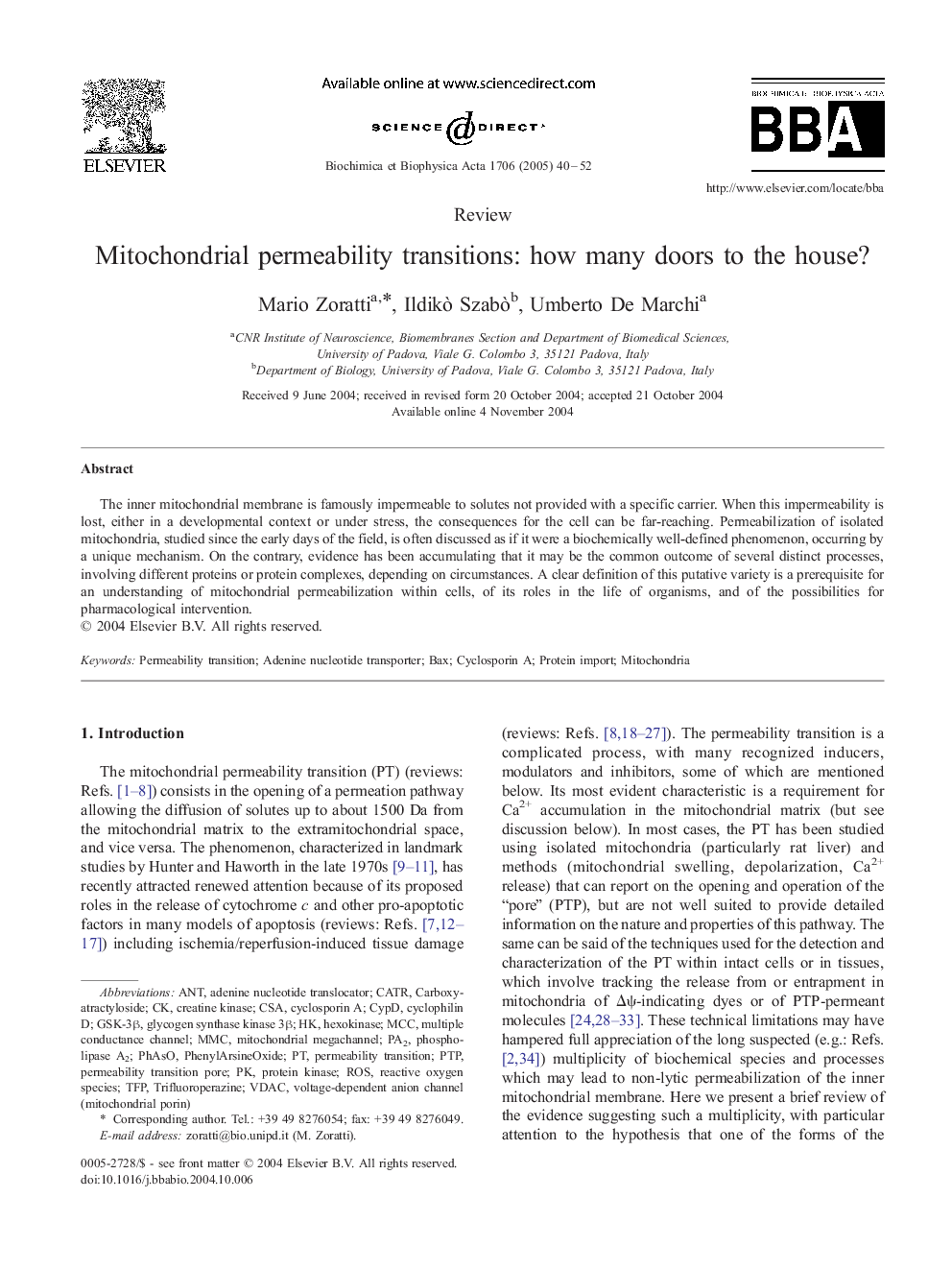| Article ID | Journal | Published Year | Pages | File Type |
|---|---|---|---|---|
| 9884704 | Biochimica et Biophysica Acta (BBA) - Bioenergetics | 2005 | 13 Pages |
Abstract
The inner mitochondrial membrane is famously impermeable to solutes not provided with a specific carrier. When this impermeability is lost, either in a developmental context or under stress, the consequences for the cell can be far-reaching. Permeabilization of isolated mitochondria, studied since the early days of the field, is often discussed as if it were a biochemically well-defined phenomenon, occurring by a unique mechanism. On the contrary, evidence has been accumulating that it may be the common outcome of several distinct processes, involving different proteins or protein complexes, depending on circumstances. A clear definition of this putative variety is a prerequisite for an understanding of mitochondrial permeabilization within cells, of its roles in the life of organisms, and of the possibilities for pharmacological intervention.
Keywords
VDACmitochondrial megachannelPhAsOCarboxyatractylosideTFPCypDCATRCyclophilin DpA2GSK-3βPTPMCCMMCANTROSphospholipase A2Permeability transition porePermeability transitionCSABaxadenine nucleotide translocatoradenine nucleotide transportercyclosporin AMitochondriahexokinaseProtein importProtein kinaseCreatine kinaseGlycogen synthase kinase 3βReactive oxygen species
Related Topics
Life Sciences
Agricultural and Biological Sciences
Plant Science
Authors
Mario Zoratti, Ildikò Szabò, Umberto De Marchi,
